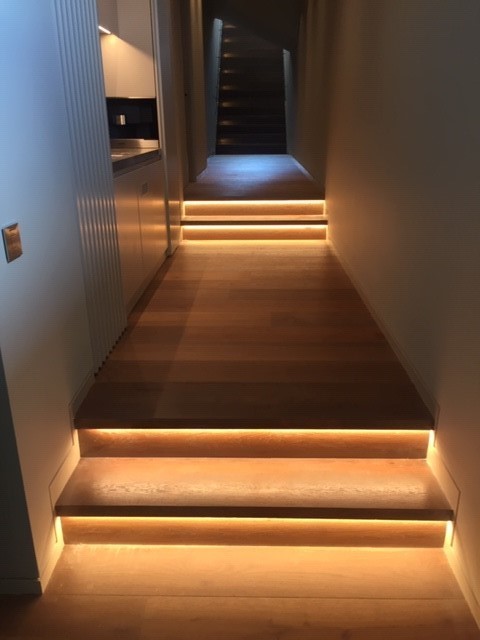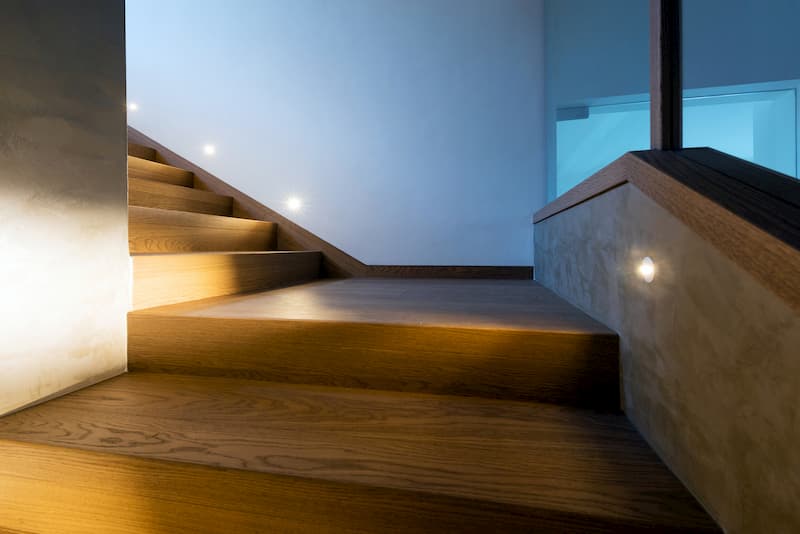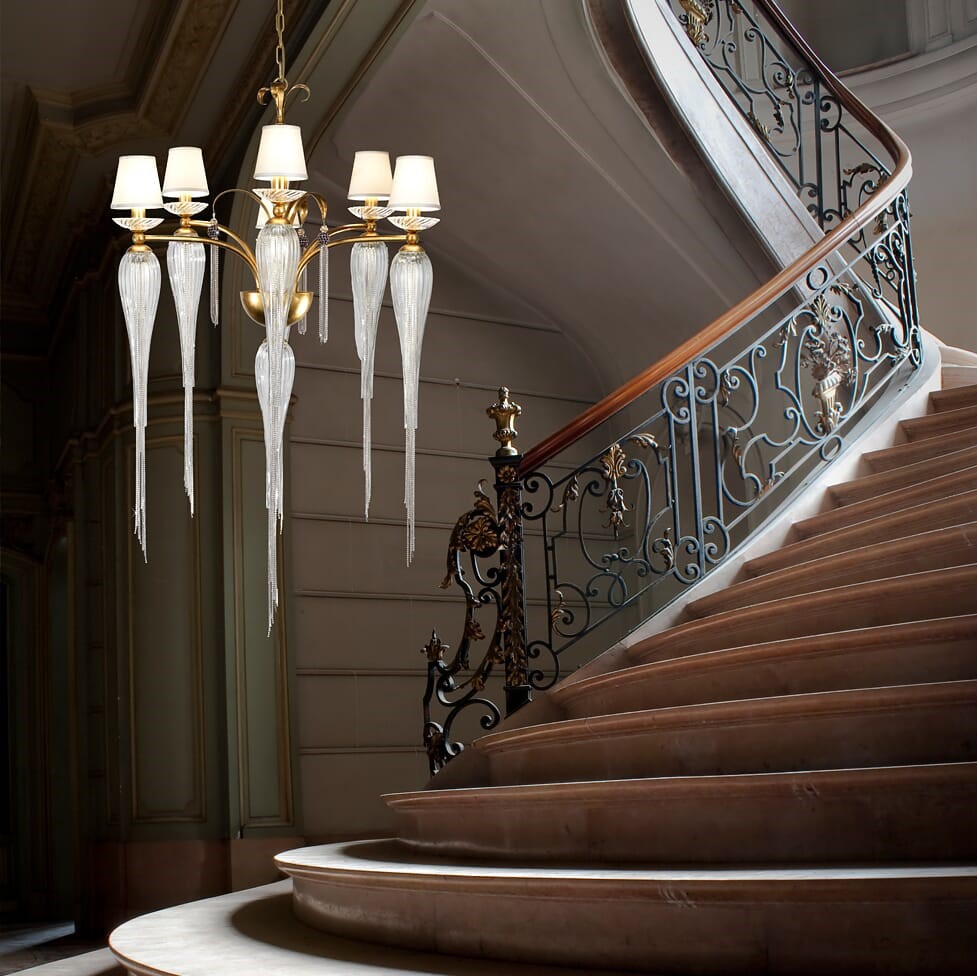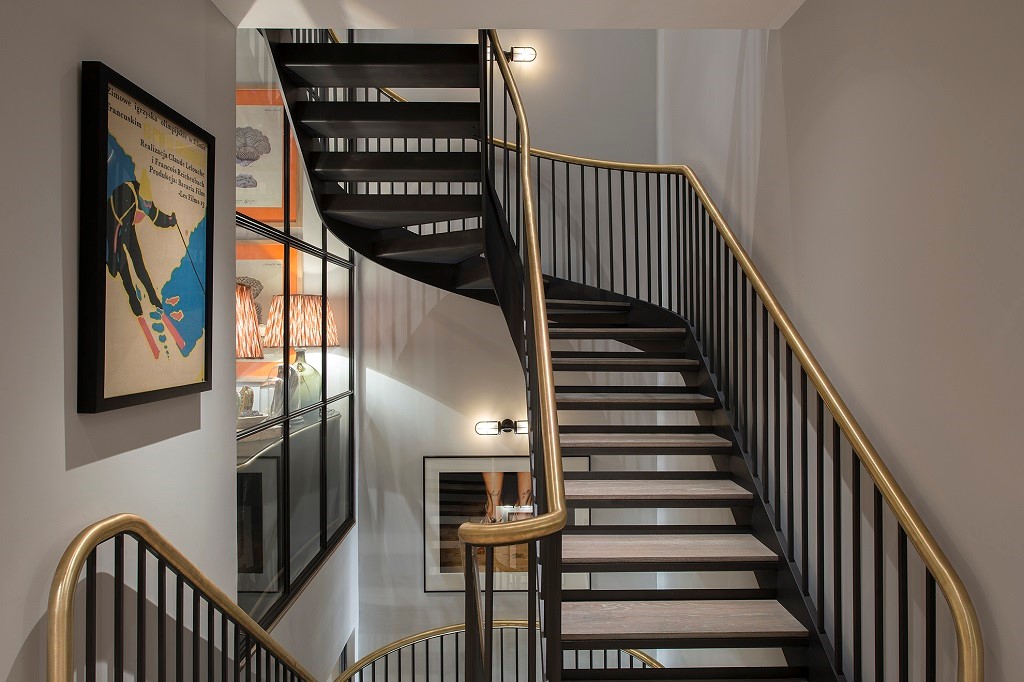Lighting underneath the lips of stairs creates a minimalistic mystery
If you are interested in modern, minimalistic lighting - illuminating the lip of steps is a clever way to achieve this. Lights underneath the lip of a step or beside them can create a minimalistic, sleek look, as the fitting is hidden.
This lighting option creates a dramatic glow on the treads below. Placing lights in this way allows you to take advantage of any bends and edges to plot a textured lighting scheme. This style may require the assistance of a professional for correct fitting, however, the result will be aesthetically pleasing and authentic.
Juliette Thomas states: “Hidden lighting that shines gently across or underneath the treads of your stairs will highlight the beautiful materials used. Small uplighters can be used to draw the eye to bannisters and vertical elements. Soft or coloured lighting adds an extra dimension. This must be in a style to complement your staircase, not fight with it.”
Lighting just the staircase riser creates a glare-free, subtle, and soothing atmosphere. This is ideal if you are seeking lighting that isn’t too harsh or bright.
Juliette adds: “Lighting needs to be used sympathetically to enhance the overall feel. Soft lighting creates a warm, welcoming mood while cool lighting provides a contemporary and airy feel.”




